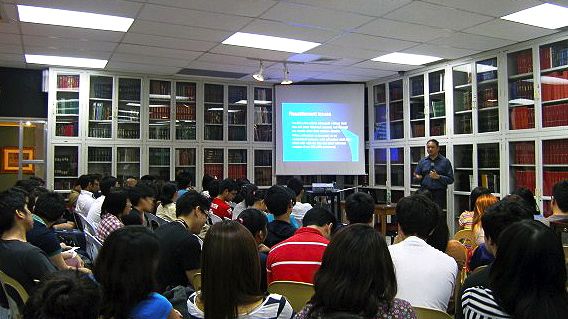SUMMARY
This is AI generated summarization, which may have errors. For context, always refer to the full article.

MANILA, Philippines – The original inhabitants of a territory usually do not have land titles to prove ownership of their ancestral domains.
Because of this, many IP communities are displaced.
On April 24, 1980, Philippine Army soldiers open-fired at two houses in the village of Bugnay, Tinglayan, Kalinga.
The attack instantly killed Macli’ing Dulag, a respected pangat (tribal chieftain) of the Butbut tribe.
The soldiers were later convicted and the day of the attack declared as Cordillera Day to celebrate the memory of Macli’ing.

The story of how Macli’ing Dulag led the fight to defend the ancestral lands of the Bontok and Kalinga peoples was told again by Dr. Nestor T. Castro, Chair of the University of the Philippines Anthrolopogy Department, during his talk last August at the Lopez Museum.
Dr. Castro recalled that Macli’ing was a target because he led the Kalinga and Bontok peoples in a fight to oppose the construction of the National Power Corporation’s Chico River Basin Hydroelectric Dam Project of the late dictator Ferdinand Marcos.
Because of this proposed project, 2,753 hectares of land would have been submerged, displacing numerous Kalinga and Bontok peoples.
“For the Kalingas and most of the indigenous peoples (IPs) of the Philippines, land is a source of life,” Dr. Castro explains. “It is sacred because it is nourished by the blood of ancestors and protected by their spirits.”
The way the IPs view land is different from how modern Pinoys see it: as property bought for investment or use, to be disposed of at will.

Nikki Luna, visual artist and founder of Start Art Project, a non-profit organization that gives art workshops for the women and youth victims of armed conflict and human rights violations, also delivered a short talk during the event.
She shared about how she uses art as a tool to directly help the victims of human rights violations, political prisoners and those who are caught in conflict.
As someone who has been in contact with members of indigenous peoples’ communities for some time, Luna understands that these Filipinos will always defend their lands and their rights because they are truly attached to their lands.
“They don’t want money,” she says, “They want to grow their crops because they believe that as long as you plant something, no one will go hungry.”
Beat, Luna’s exhibit then in the Lopez Museum tackled the issue of land ownership. In an installation titled “Soil” for instance, she collected soil from 7 IP areas in Mindanao and placed them in jewelry boxes. This is from areas that are highly militarized because of the presence of mining operators.
“For the children there, the land they step on is their jewel; it was theirs way before other people came and they have nothing else,” Luna explains. “They only want their land back.”
Luna uses her art to make people think and question their own beliefs. “As an artist, I’ve always wanted to create art that tells something about our current times,” she shares, “Art is a tool to make people think about where they stand in (any) issue.”
The most common factors that displace IPs, according to Dr. Castro, are:
- Mining
- Forestry or logging projects
- Hydropower projects
- Armed conflict between the military and rebel groups
The Philippines’ Indigenous People’s Rights Act (IPRA) declares that IPs have rights, and that the customary laws of the place should be respected and treated as part of the laws of the land.
“There is a need to document these (customary) laws so that outsiders will become familiar with these laws,” he says.
For most — if not all — of the IPs of the Philippines, land is life.
Their natural environment is deeply embedded into their culture and their identity.
The IPs believe that people are not the owners of land, but only its steward.
In the words of Dulag himself, “How can you own that which will outlive you?” – Rappler.com
Add a comment
How does this make you feel?
There are no comments yet. Add your comment to start the conversation.